
“There were fish on the streams, and the beautiful fallow paddy field was the best memory of our childhood." - Supriya, Member of Keezheveetil Family, 2024
Keezheveetil Kaavu
Keezheveetil kaavu in Attingal town is situated in a lowland near a paddy field. The kaavu is maintained by the Keezheveetil family. The kaavu was said to have started with small Naga idols by the family hundreds of years ago; with time, the kaavu started to have new deities like Ganapathy, Yakshi, and Sastavu. The recent construction of a 29-kilometre raised multilane highway in the area has made the kaavu difficult to access. This has moved the extended family away from their traditional residential properties and shifted them some distance away. Besides this, the road and its embankment have cut through the fallow paddy fields and changed the landscape and drainage in the area.



“The kaavu is around 200 years old and known for seven generations of the family.” - Padmini Amma, Member of Keezheveetil Family, 2024
The family continues to take care of the grove by performing rituals and trying not to disturb the flora and fauna or damage the land on their part. Today, the grove stands alone amidst the changes, striving to keep its spiritual and ecological importance. The construction and human intervention resulted in many animals and birds leaving the area. The only reason the family comes here now is the pull of the family kaavu.

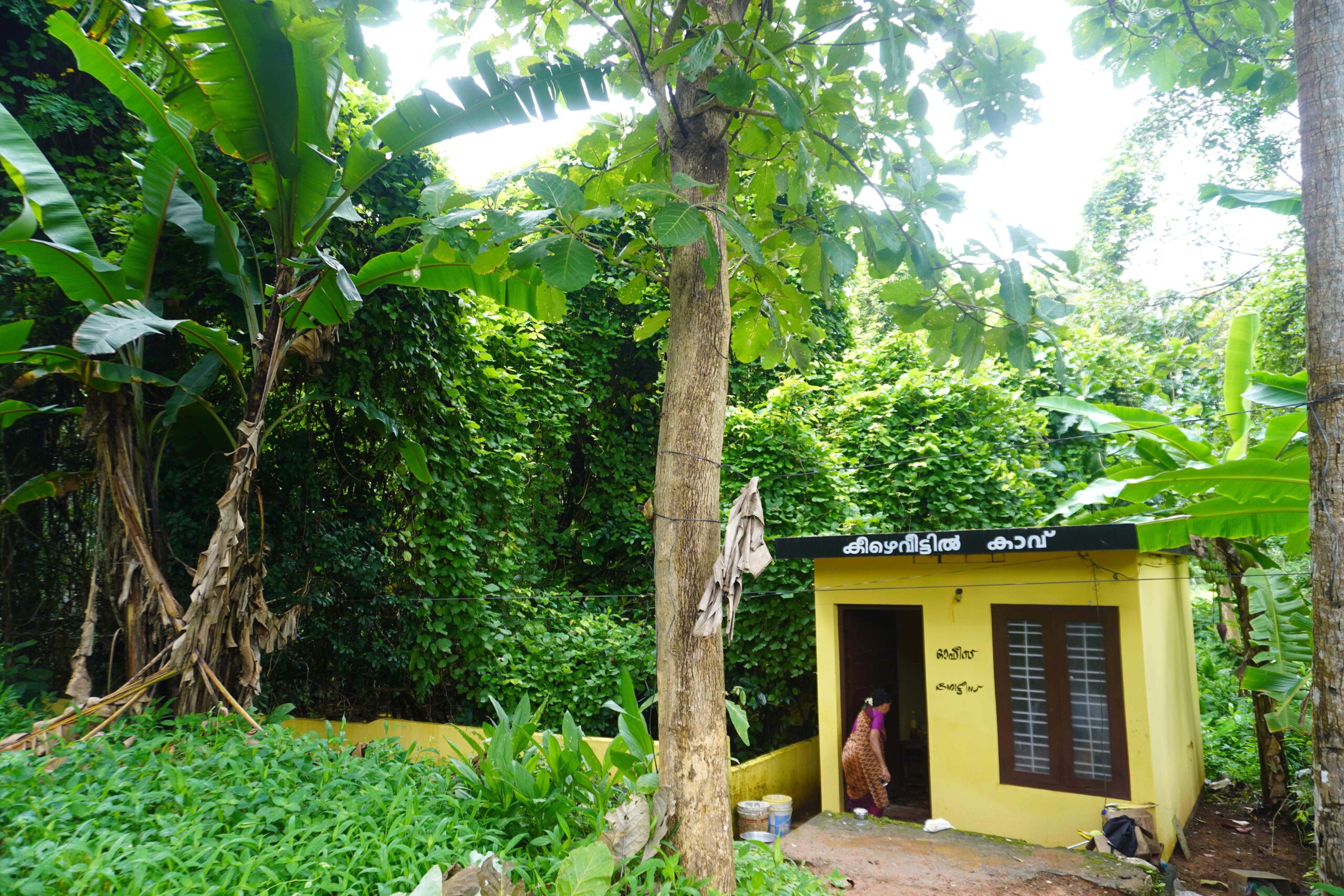

“The family is concerned about the future as it is not in our hands. But currently, we are doing everything we can do to maintain the kaavu.” - Sreejith, Family member and secretary of the Kaavu
Sacred Groves
Nature and its wonders have awed human beings since the earliest times. They revered mountains, rivers, and trees and considered them divine. The need for security and survival made these elements sacred. Awareness of their importance and protection of these resources are seen in many communities. Sacred groves, which have existed worldwide, are one of the early examples of human conservation of nature.
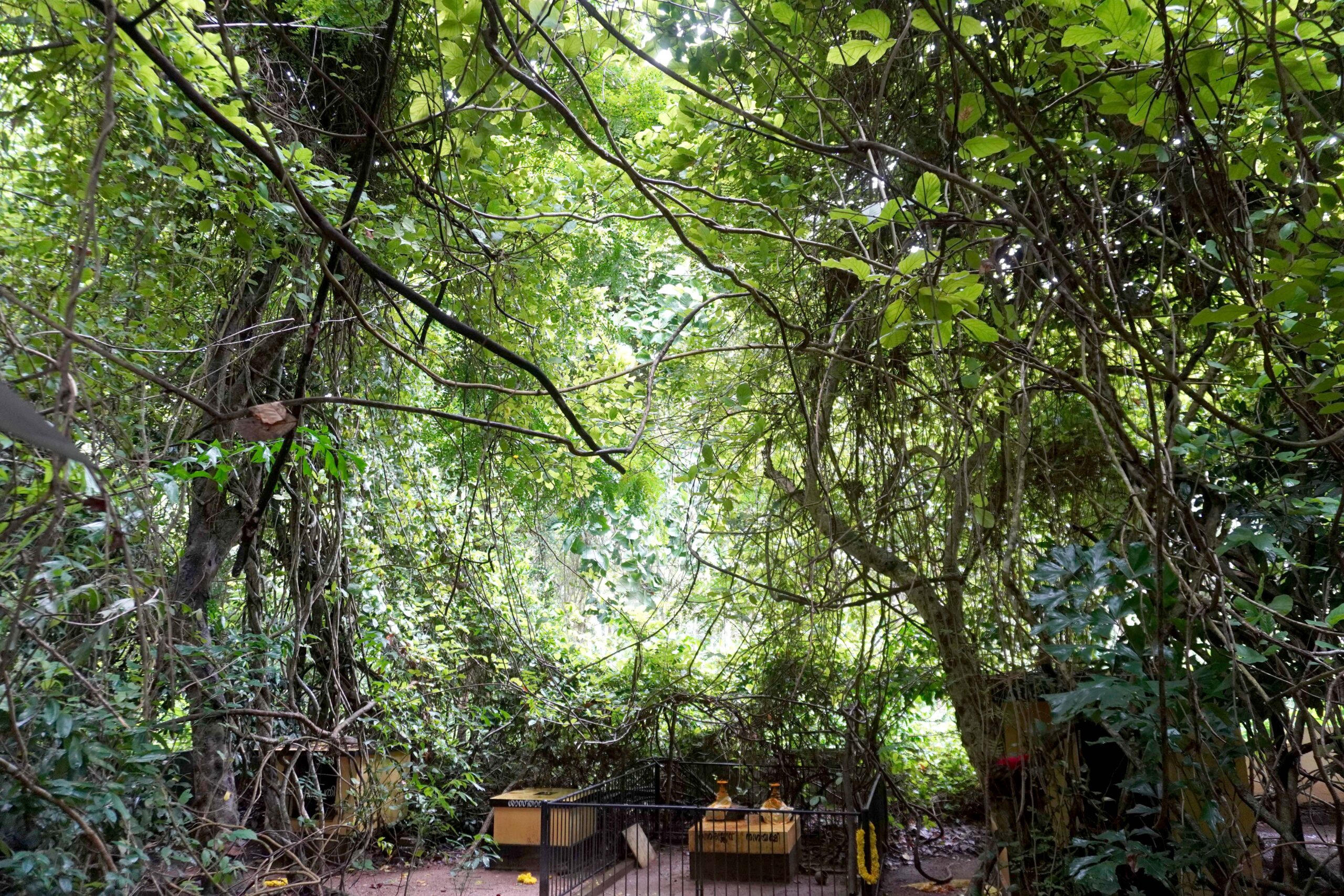
Sacred groves are sanctified patches of forests protected by the strength of religious beliefs as abodes of the deities present there. These groves are generally known to almost all the states in India by different names. These are seen in the Himalayas, Northeast India, the highlands of Bihar, Orissa, Madhya Pradesh, Andhra Pradesh, Karnataka, Tamil Nadu, and Kerala. In Kerala, they are known as kaavu. Sacred groves do not have any particular architectural form or infrastructure. The deities are placed in open spaces within the groves; they may vary in size and shape. Cutting branches or trees in the grove is rare because it could bring bad luck not just to an individual but also to the family and larger community. The devotees believe that purity of their mind and body is essential for entering the sacred grove.
The Kaavu of Kerala
Sacred groves are distributed in almost all the districts of Kerala. They are mostly concentrated in Alappuzha, Palakkad, Thrissur, and some districts in Northern Kerala. The word kaavu refers to a conglomeration of different species of herbal or non-herbal plants and different species of fauna. Sacred groves in Northern Kerala are called Theyyakaavukal (dedicated to the ritual art form theyyam), Vayalorakaavukal (a sacred grove near the agricultural field), Kadalorakaavukal (a sacred grove near the sea), and Thekkankeeralathilekaavukal for the central part of Kerala and Vanampradeshathekaavukal (a sacred grove near the forest) for southern Kerala. These groves are home to various plants, reptiles, birds, and butterflies. Sacred groves are more than a space of worship, for ecologists they present a unique undisturbed local habitat.
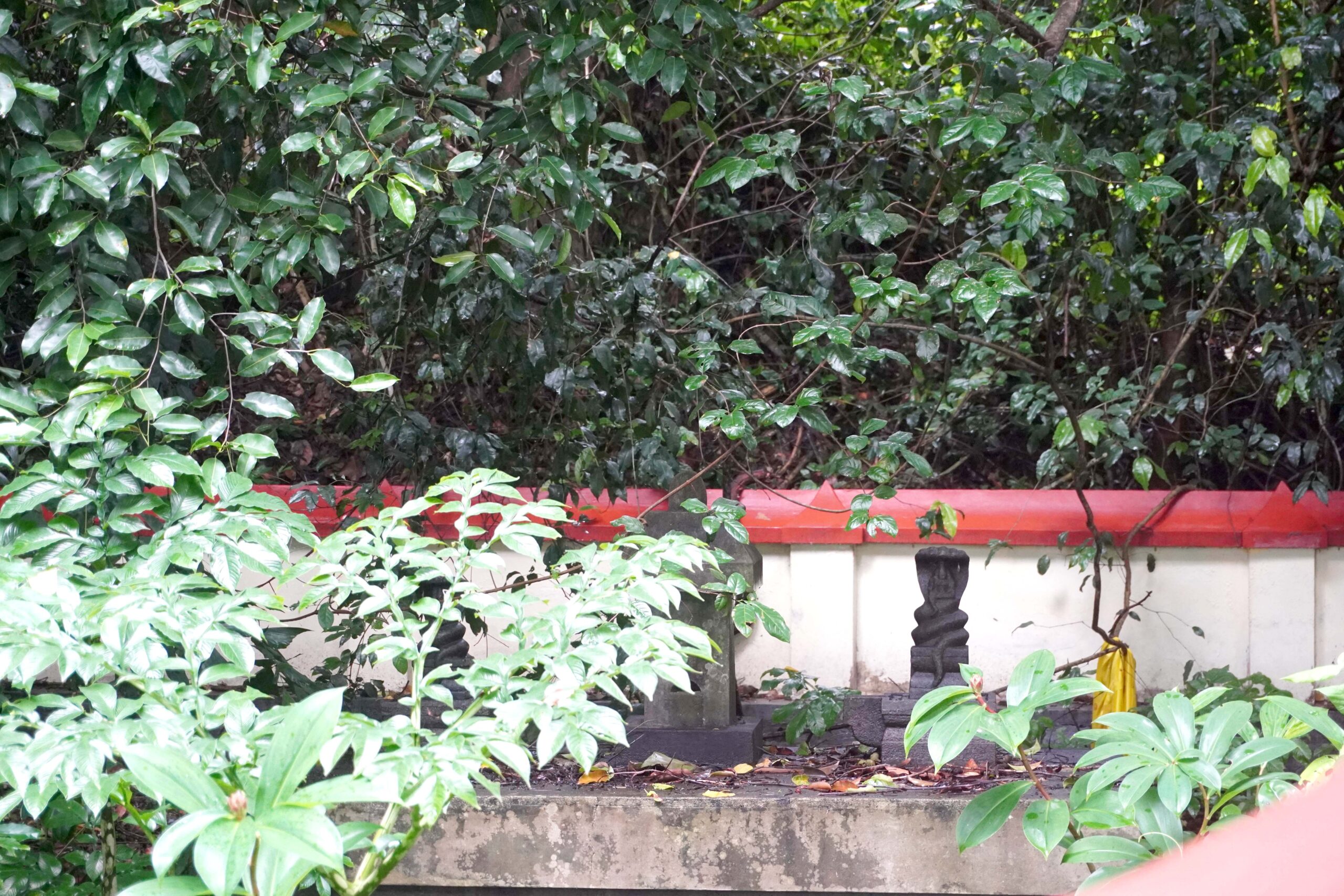

Connecting Ecology and Beliefs

"A myth like snakes purifying the air is just an understanding about how kaavu helps in keeping the air clean.” -Manikandan, Pulluvan community member, 2024
Sacred groves are prime examples of human conservation of nature by including various flora and fauna with landscape and water sources. Religious practices have preserved an estimated 100,000–150,000 sacred groves across India, ensuring they remain biodiverse habitats home to an array of endangered species.
In India, sacred groves survived with difficulty under a variety of ecological situations. They remain a treasure house of medicinal and aromatic plants. Medical plants are usually connected to religion and seen as sacred. Ancestors understood the idea of conserving these plants. Sacred groves can restore the devastating impact of pollution and deforestation. They improve the soil stability of the region and act as a soil binder.

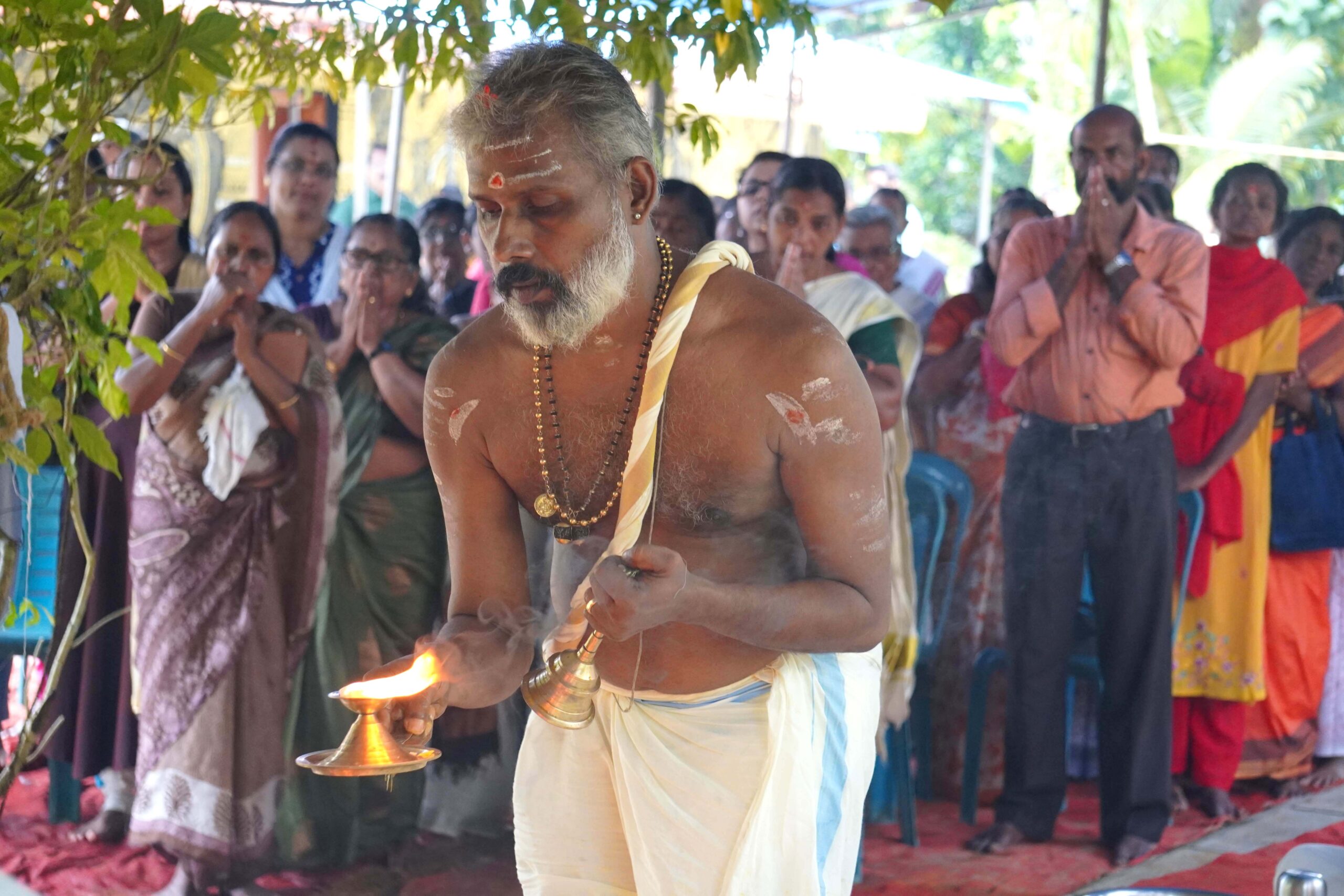
The nutrients from the groves find their way into the adjoining agroecosystems. Kaavus are also an approach towards protecting the living beings in nature. An animal cult is shaped when a god is respected or worshipped through a representative animal. Humans considered the animal world as superior to them and saw it with fear. There are various rituals associated with the sacred groves in Kerala. The customs and rituals will have regional variations in the kaavus.

“Not only snakes, even small rats to the biggest animals like elephants and birds enter mythology of the kaavu, it's about protecting the nature.” -Vasudevan Thantri, 2024
Origin and Local Legend
Every sacred grove has stories relating to its origin. Usually, they have a certain supernatural origin. These stories also reveal the links between sacred groves and historical events and personalities. Generally, the name of a sacred grove may closely relate to a person, family, or certain character specific to the locality. Most of the kaavus are known by their family names, like Mannarasala Nagakaavu, Pambinmekkat Nagakaavu, Amedamangalam Sarppakaavu, etc.
Pambinmekkat kaavu at Thrissur is an example of a belief that begins with a family’s troubles and its resolutions. The family faced financial issues. The distressed eldest Namboothiri thought to medicate for 12 years at Thiruvanchukulam temple. The Naga king Vasuki appeared before him and advised him on how to wipe out poverty. From that day onwards, serpents became the presiding deity of the mana, later known as Pambumekkattumana. The Namboothiri homestead is believed to still house the mythical gem received from the serpent king Vasuki.
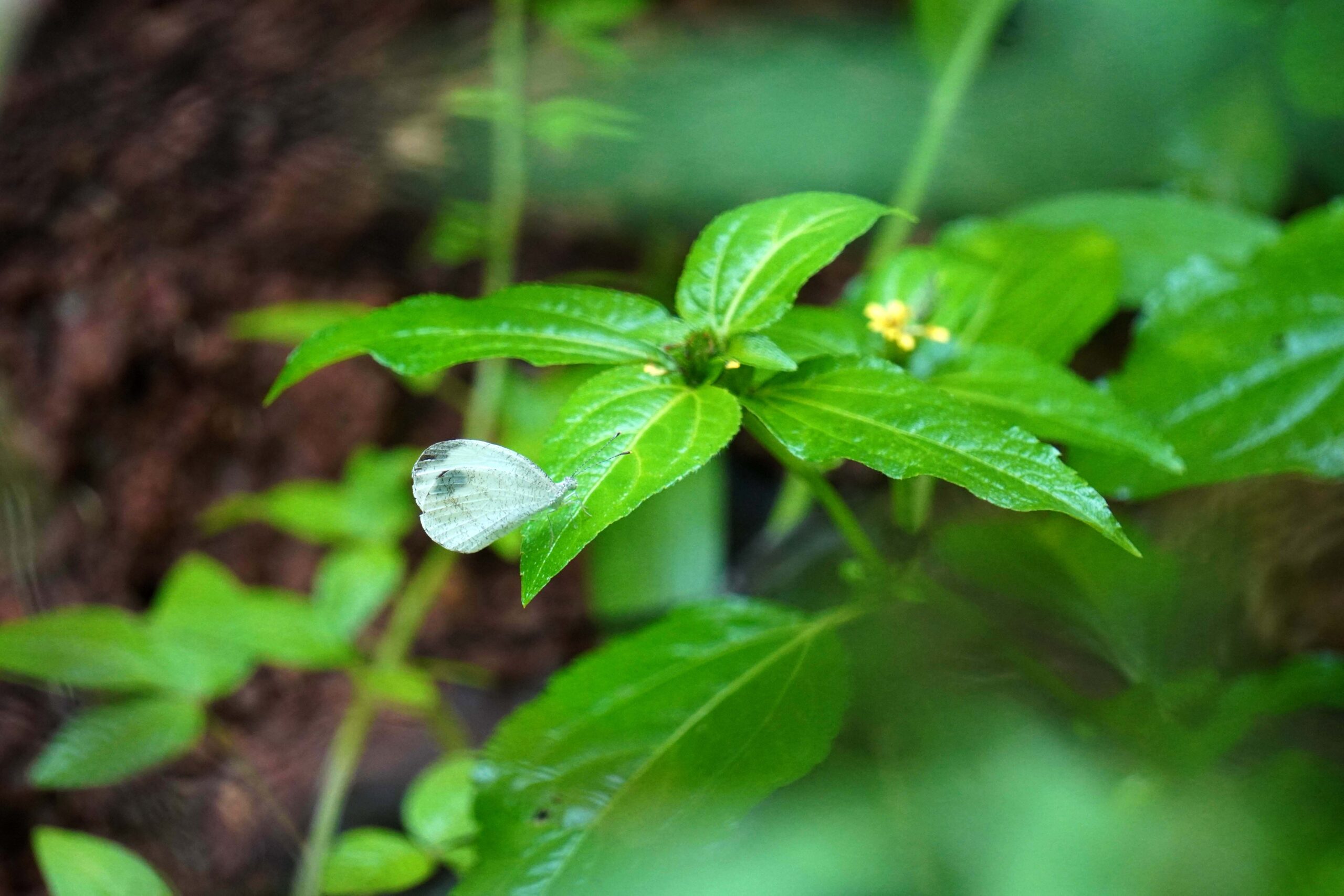

Kaavu Deities and Associations
Sacred groves in Kerala are known by different names based on the name and nature of the deities present there. Sacred groves in Kerala have been broadly classified into Sarppakavu, Bhadrakali kaavu or Durga kaavu, Ayyappan kaavu, Yakshi kaavu, Madan kaavu, Mrgadaivakaavu, Gulikankaavu, Thayipparadevatakaavu, Ammadaivakaavu, etc. All the communities of Brahmanical religion in central Kerala have Sarppakavu in their family-occupied landscape. In Kerala, snake worship has long been a major part of religious life; testimony of this goes back as far as the eighth century.
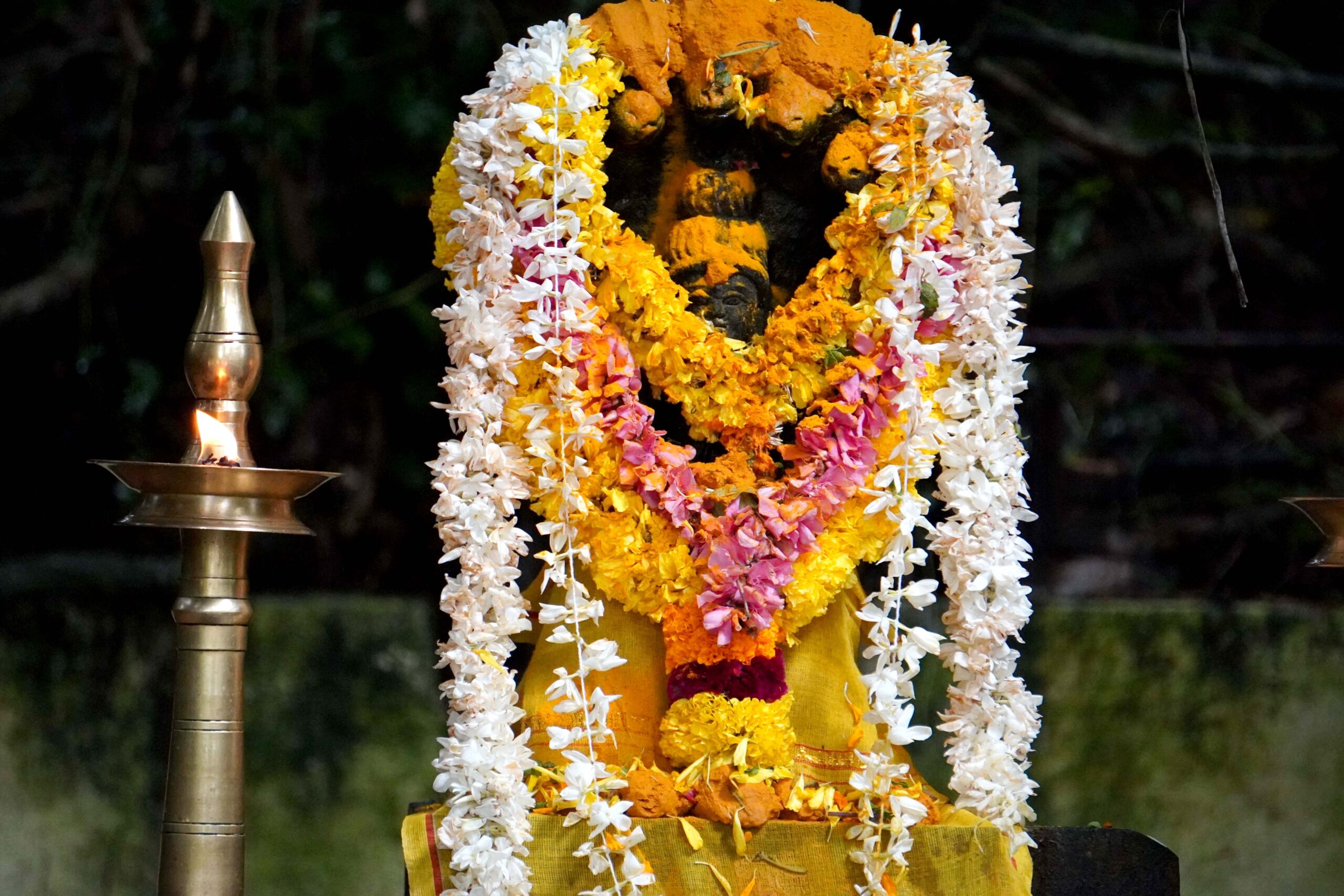
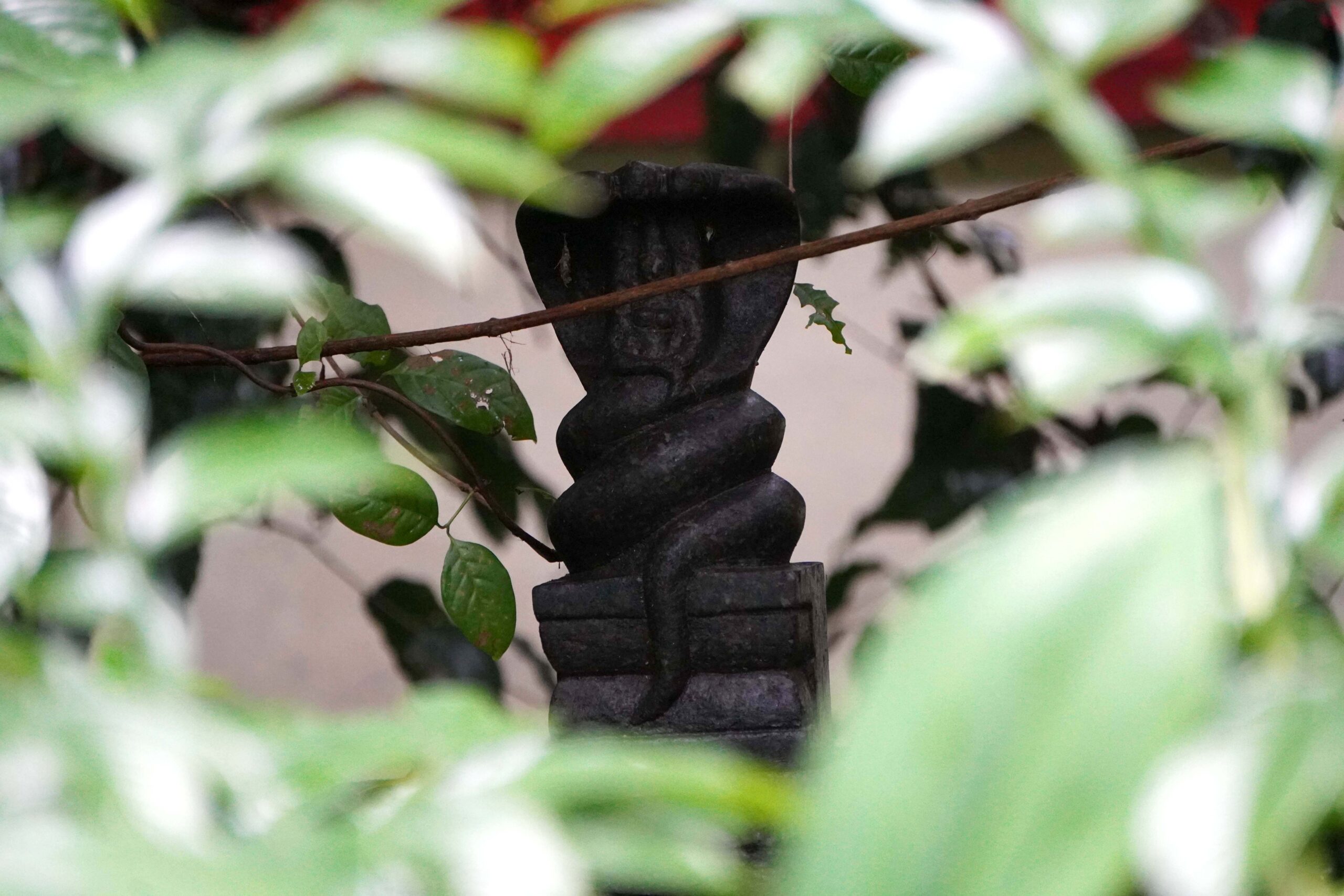
Mainstream families in Kerala pray to the snake (naga) for prosperity. Manikandan, a Pulluvan singer, said, “During certain ceremonies, the spirits of the snakes are invoked and invited to reside within these structures. This dimension adds to their spiritual significance.” Vasudevan Thantri, a Naga ritual-performing priest, in a personal interview, said, “In the past, there was no platform; the only thing present was either a stone sculpture or chitrakoodam. In some groves, you will also find the installation of Sivalinga. In Kerala, snake worship is mostly based on Saivate beliefs.”
Chitrakoodams are pyramid-shaped stone structures that are built between two deities. They are also seen in almost all kaavus. Many communities are closely associated with the forest, like Pulayas, Mavilars and Koragars worship small stone deities under trees even today.
Snake Rituals
The installation of snake deities in kaavu is done through a ritual called Sarppapratista. Ayilyam is the birth star of the snakes, and the ritual of Ayilya pooja is performed in sacred groves. Various offerings are made on this day to the serpent deities. Ashtanaga pooja is another ritual associated with the serpent cult in Kerala; this is for appeasing the eight divine snakes in Brahmanical texts. One of the major rituals is the Sarpabali which is similar to Vedic rituals and suppose to bring good luck for getting marriage and having children. Noorum Palum is a ritual done to feed the deities and is common across Kerala.
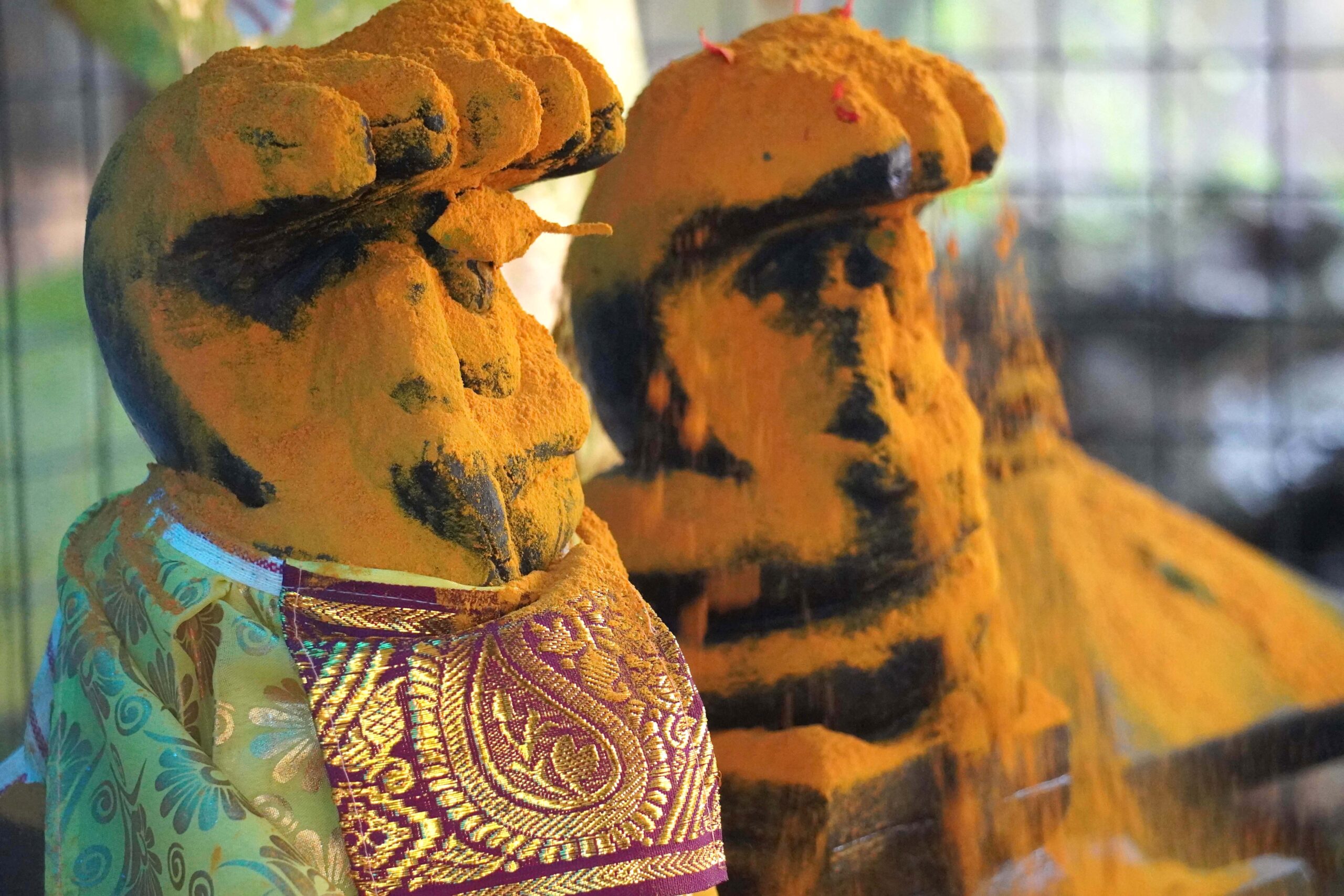
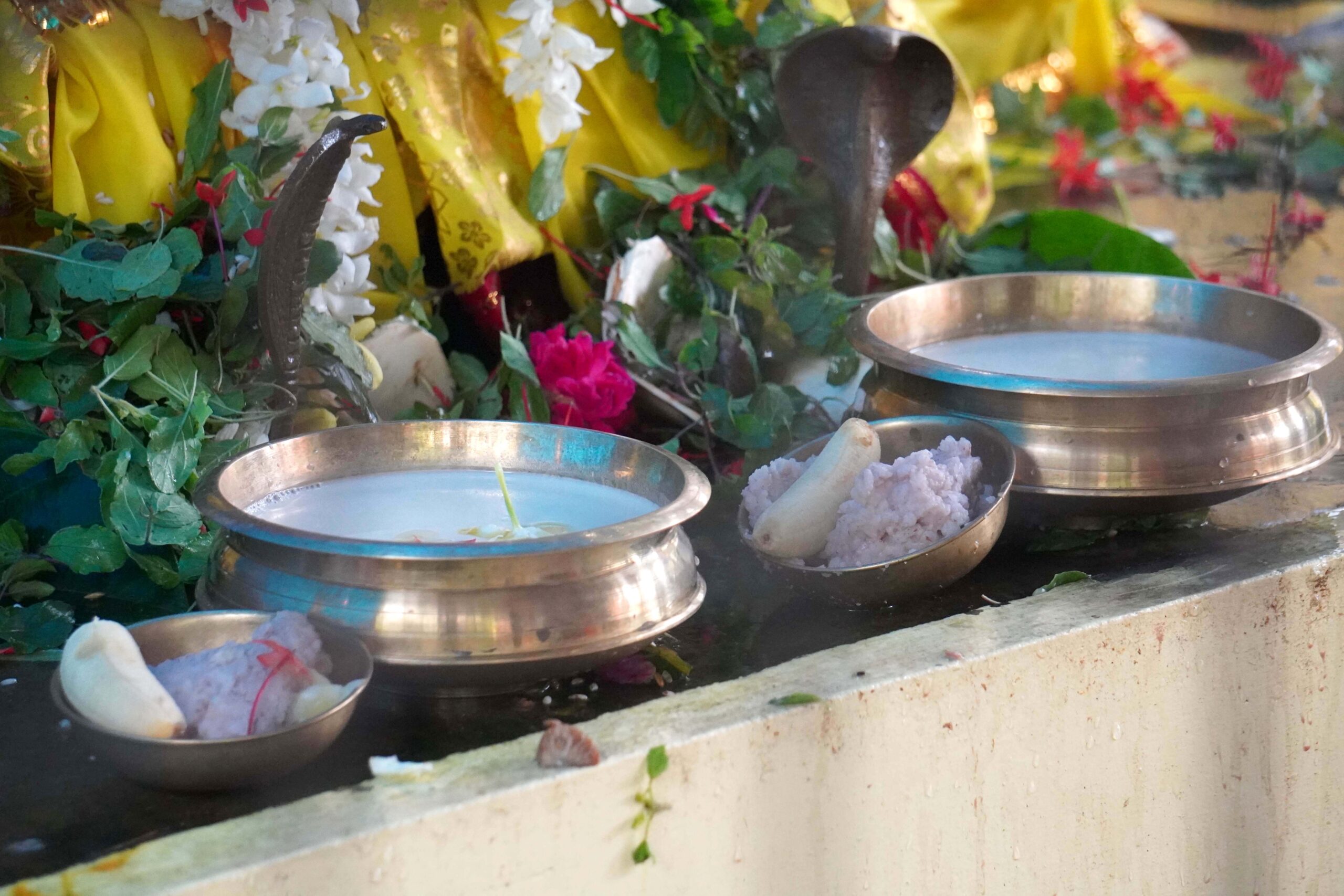
Kalamezhuthu and Pulluvan pattu are other common practices at kaavus. Both are usually done by the Pulluvan community. Kalamezhuthu is drawing on the floor with coloured powders. Pulluvan pattu is the narration of naga stories through songs. Other practices like the theyyam are performed at the kaavu, especially in North Malabar. Manikandan, a performer at the kaavu added that “no rituals are performed on the breeding and mating times of snakes because they can affect the snake habitat.”
The main ideology behind these groves was to protect the habitat of the living beings there. Sarppakaavus are symbols of a human’s peaceful coexistence with nature and fellow creatures. Apart from the occasional prayers and rituals, human interventions in these ecosystems were practically absent. Thus, religious beliefs indirectly promoted the conservation of natural resources.
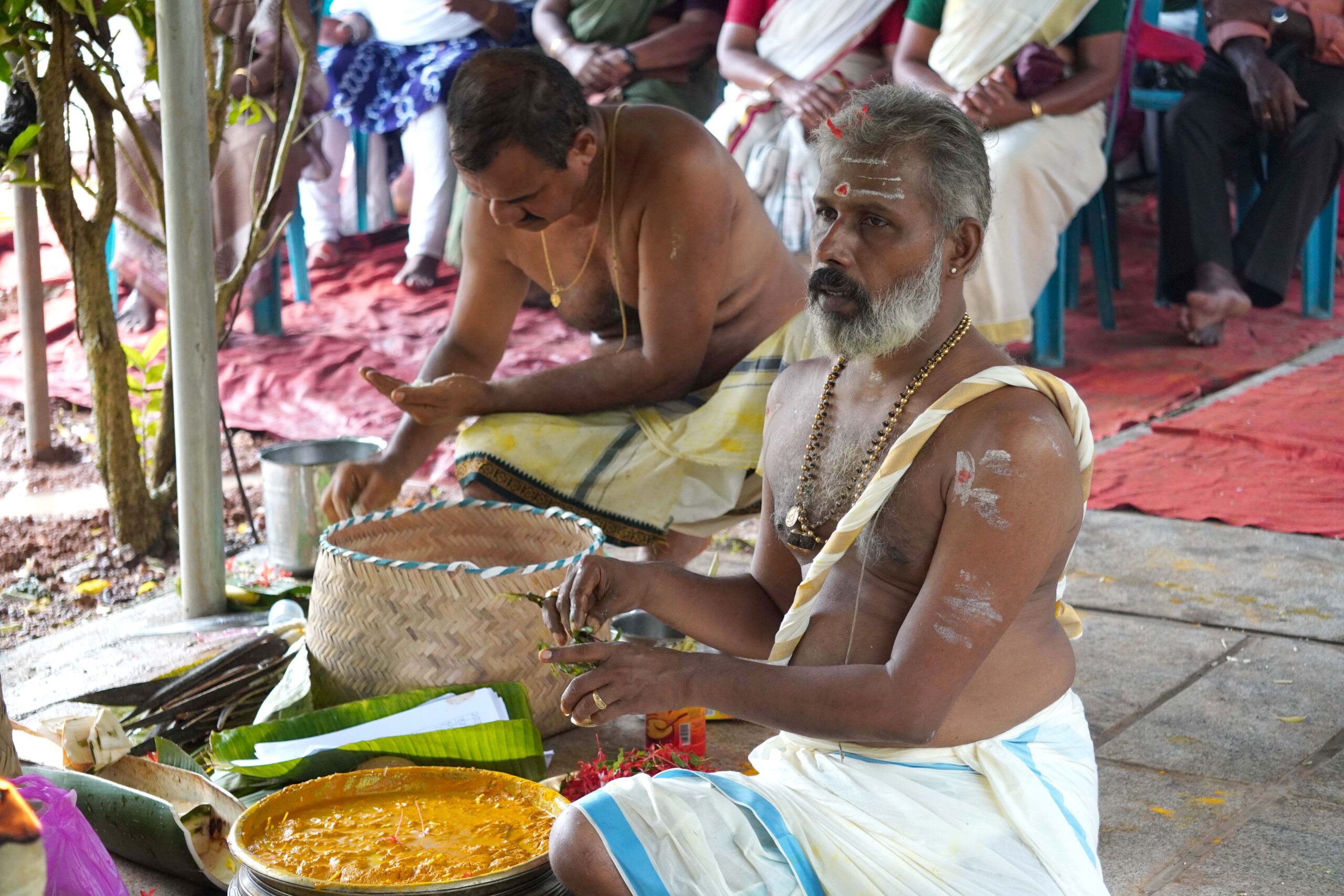
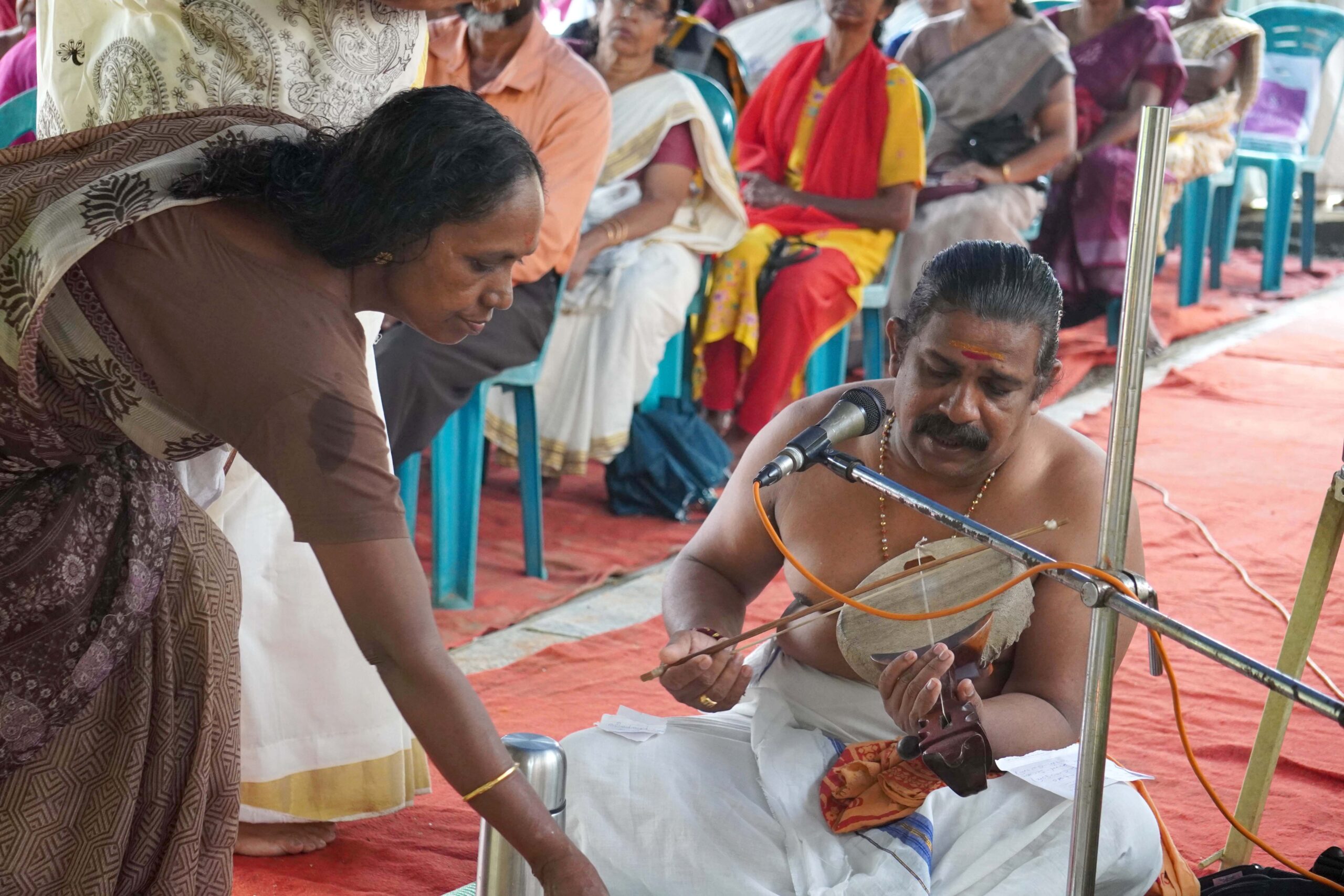
Threat to Sacred Groves
Sacred groves are showing signs of weakening and decreasing in terms of cultural, biological, and ecological integrity. At some places, people are shifting the resident gods from the sacred grove to a new location. Once this shift happened, the protection that was available to the kaavu was lost. this indicates the lack of awareness of the long-term effects of the sacred grove. In Keezheveetil kaavu, the construction of roads and increased human activities have resulted in pollution in water bodies and paddy fields near the grove.
To maintain the identity of the sacred groves and their ecological importance, the surrounding village communities need to be made aware of the multiple benefits of the existing groves to sustain their position. The importance of documentation of the sacred groves will build awareness regarding their importance, and inform about the basis of traditional values, practices, and beliefs among the youth.

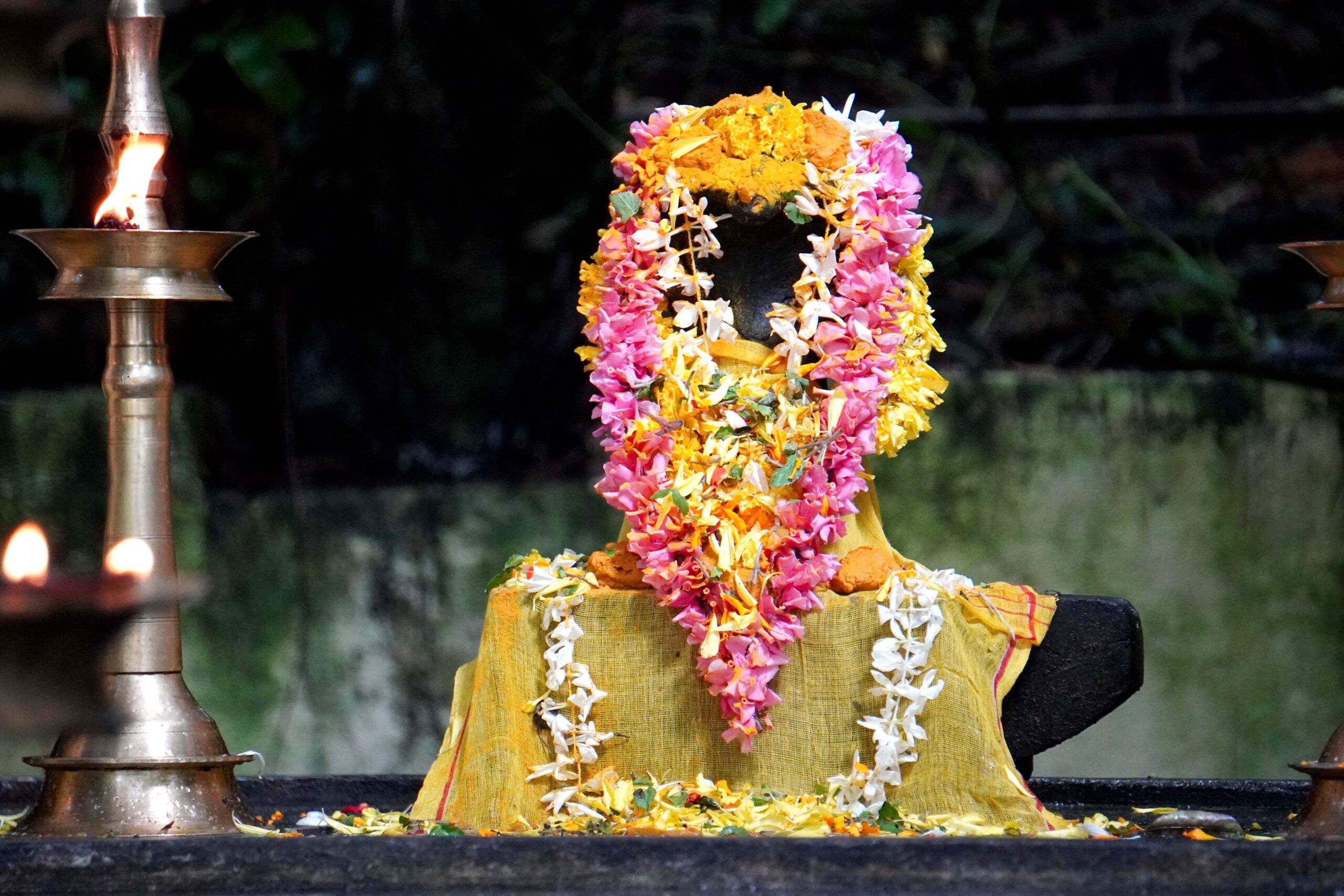
Rapid modernisation and the new generation may see sacred groves as a superstition, but it’s necessary to understand the science behind it. Recently, steps have been taken for the preservation of this environmentally sensitive area. Government aid was also declared for the owner of the grove to preserve and protect it, especially by the Kerala Forest Department. The story of the Keezheveetil kaavu is not just about a grove; it illustrates the ongoing struggle to preserve heritage and biodiversity in an ever-changing world.